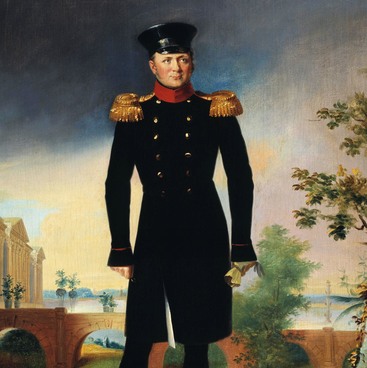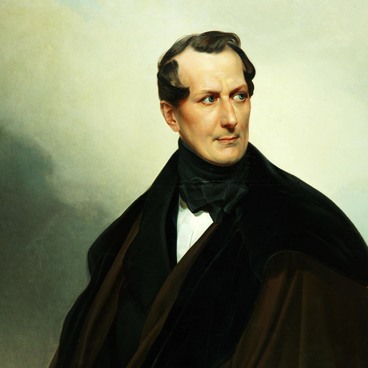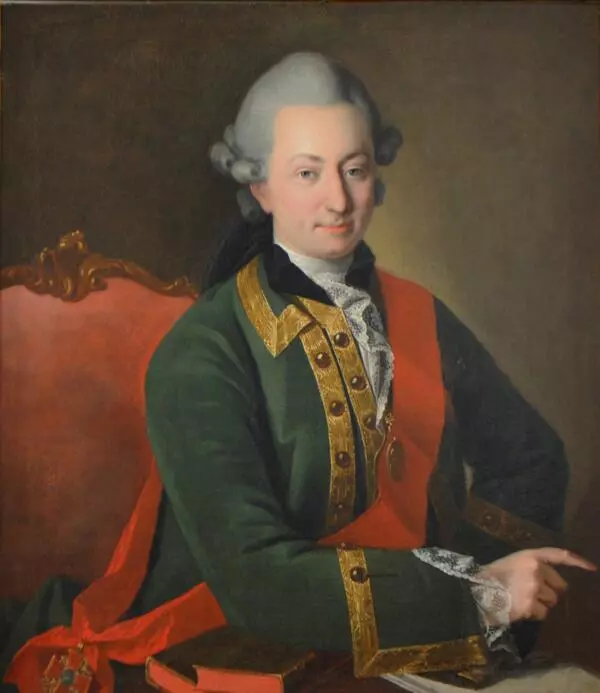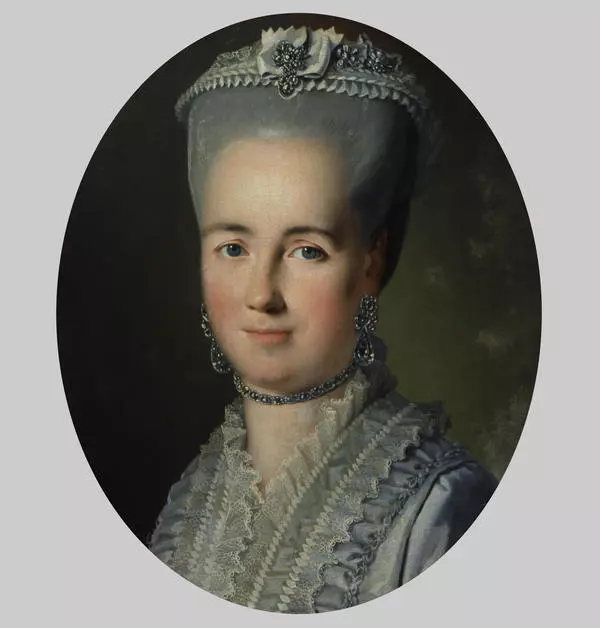Carl-Ludwig Christinek, a Russian painter, was born in 1732 or 1733 to a family of German lessor who emigrated to Russia. He studied the artistic craft in Saint Petersburg, where he lived all his life. He is most famous as a master of the portrait genre. His customers were mostly noblemen, intellectuals, servicemen and Russified Germans who resettled in Saint Petersburg. The painter was almost entirely forgotten after his death, however, a couple hundreds of his painting have survived to our time: they show that he had substantial success in his lifetime.
This painting depicts count Alexei Grigorievich Bobrinsky, an illegitimate son of the Empress Catherine II and her favourite, Grigory Orlov. The portraits of the 18th century often depicted children as little adults: it was important for these works to depict the superiority of a little nobleman’s social position instead of his age. It is difficult to say how familiar the young count was with elegant manners, but he graciously places the hands on the hips and does an elegant gesture with his left hand.
A black cocked hat is under Bobrinsky’s left arm. He is dressed in a light-colored silver and green suit, decorated with silver buttons and needlework. The collar and cuffs are lacy. The sword’s handle can be seen from under the camisole. The teal eyes stand out on his white and pink, nearly porcelain-like face. He looks down on a viewer, but in a favourable way.
This portrait depicts young Bobrinsky before his departure to study in German Leipzig. Later, due to huge gambling debts, he was called to Russia at first, but afterwards he was allowed to remain in Reval, the former name of Tallinn. There, he lived for a couple of years and married a daughter of Reval’s Governor.
This portrait was painted in two versions, which were painted to remind of Bobrinsky during years apart. At a later date, the portrait was kept for many years in a castle of descendants of a grown-up count in Tartu, and in the beginning of 20th century it appeared in a revolutionary Petrograd, from where it got transferred to Rybinsk Museum among other paintings. Presently, it is on display together with another painting made due to a similar occasion: the portrait of a little princess Anastacia Davydova.
This painting depicts count Alexei Grigorievich Bobrinsky, an illegitimate son of the Empress Catherine II and her favourite, Grigory Orlov. The portraits of the 18th century often depicted children as little adults: it was important for these works to depict the superiority of a little nobleman’s social position instead of his age. It is difficult to say how familiar the young count was with elegant manners, but he graciously places the hands on the hips and does an elegant gesture with his left hand.
A black cocked hat is under Bobrinsky’s left arm. He is dressed in a light-colored silver and green suit, decorated with silver buttons and needlework. The collar and cuffs are lacy. The sword’s handle can be seen from under the camisole. The teal eyes stand out on his white and pink, nearly porcelain-like face. He looks down on a viewer, but in a favourable way.
This portrait depicts young Bobrinsky before his departure to study in German Leipzig. Later, due to huge gambling debts, he was called to Russia at first, but afterwards he was allowed to remain in Reval, the former name of Tallinn. There, he lived for a couple of years and married a daughter of Reval’s Governor.
This portrait was painted in two versions, which were painted to remind of Bobrinsky during years apart. At a later date, the portrait was kept for many years in a castle of descendants of a grown-up count in Tartu, and in the beginning of 20th century it appeared in a revolutionary Petrograd, from where it got transferred to Rybinsk Museum among other paintings. Presently, it is on display together with another painting made due to a similar occasion: the portrait of a little princess Anastacia Davydova.






